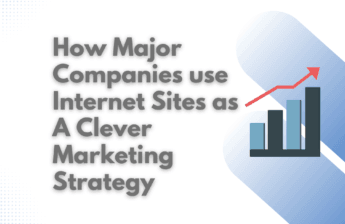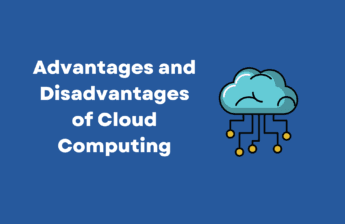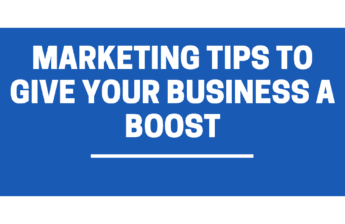Moving to the cloud can feel like a big leap. You’re dealing with critical systems, sensitive data, and the pressure to keep operations running smoothly. A well-structured checklist gives you direction and control throughout the transition. It provides clarity, minimizes risk, and helps you avoid surprises that could derail your plans. Instead of reacting to problems, you’ll be prepared for them.
Contents
Define Your Goals and Success Metrics
Every migration should start with a clear purpose. Do you want to cut infrastructure costs, boost scalability, or improve security? Pin down the outcomes you’re aiming for. Without them, it’s hard to measure progress or justify the investment.
Set specific benchmarks, such as reducing downtime by a set percentage, improving response times, or meeting certain compliance standards. Your checklist should align closely with your overall business goals, whether that’s scaling operations, improving efficiency, or achieving long-term cost savings. When your goals are measurable, you’ll know exactly when you’ve succeeded.
Assess Your Current Infrastructure
You can’t build a solid plan without knowing where you stand. Take time to review your existing workloads, applications, and data. Which systems are mission-critical? Which ones are outdated or underperforming?
Dependencies often cause delays, so map out how your systems interact. Some legacy systems, meaning older applications or hardware that your business still relies on, may need upgrades or reconfiguration before migration is possible. While they can still support daily operations, they often run on outdated technology that doesn’t integrate well with modern cloud environments.
Running a cloud readiness assessment at this stage highlights risks and helps you plan around them. It’s also important to examine your IT infrastructure as a whole. Look at storage, networking, and performance requirements, then consider how they’ll connect to your target cloud infrastructure. This step ensures your foundation can support the new environment without introducing bottlenecks or risks.
Choose the Right Cloud Model
Not every cloud setup fits every business. The right approach depends on your needs, priorities, and long-term goals:
- Public cloud: Scalable and cost-effective for many workloads.
- Private cloud: Greater control and stronger security.
- Hybrid cloud: A balance of flexibility and protection.
- Multi-cloud: Distributes workloads across different cloud platforms to reduce risk.
If you’re unsure which option works best, consider tailored business cloud solutions that combine flexibility, security, and ongoing support. Platforms like Microsoft Azure and Google Cloud provide advanced tools and integrations, but it’s the expertise of your IT partner that ensures those resources align with your goals. With the right guidance, your cloud model becomes a secure foundation for growth.
Plan Security and Compliance Early
Security should be a priority from the very start of your cloud migration. You’re moving sensitive data, and a single oversight could lead to costly breaches. Put solid safeguards in place before you even begin the transition.
Consider encryption for data in transit and at rest, multi-factor authentication, and identity management systems. Strong security measures and regulatory adherence should guide your strategy. That means identifying which laws, standards, and industry requirements apply to your business and ensuring your migration plan fully complies with them. Building a data security mindset into your checklist will protect both your business and your customers.
Create a Data Migration Strategy
Data is often the trickiest part of the move. Start by prioritizing what data needs to move first. Critical systems should take precedence, while less urgent files can follow later.
Not every workload can be handled the same way. Some may fit a simple lift and shift, which transfers them to the cloud without redesign. Others may need to be modified. Organizing the transition into migration waves allows you to move workloads in phases, which keeps the cloud migration process more manageable.
Safeguards are equally important. Maintain backups, run validation steps to confirm accuracy, and keep a rollback plan ready in case issues arise. Finally, include strong disaster recovery measures so critical data and systems can be restored quickly if something goes wrong during or after migration.
Equip Your Team
Technology alone doesn’t guarantee a smooth migration. People play just as big a role. Your team needs to understand their responsibilities during the process. Assign clear roles, whether it’s monitoring security, validating data, or managing timelines.
Provide training so staff can get familiar with the new environment. If you lack the necessary expertise in-house, don’t hesitate to bring in external specialists to provide niche skills.
Test Before Full Deployment
Jumping straight into full migration is risky. Instead, run pilot tests in a staging environment. This allows you to uncover performance bottlenecks, integration issues, or security gaps before they impact the entire business.
Testing gives you confidence in the plan. It also helps your team adapt to the new setup gradually. The more thorough your testing, the smoother the final deployment will be.
Plan for Post-Migration Optimization
Reaching the cloud isn’t the finish line. Once your systems are running, monitor performance closely and look for opportunities to fine-tune workloads, reduce costs, and automate repetitive tasks.
Cost management tools can help prevent cloud sprawl, where resources grow unchecked and drive up expenses. Regular reviews will also ensure you’re meeting performance expectations and compliance requirements. Optimization should be built into your operations, not treated as a one-time task.
Final Thoughts
A cloud migration checklist gives you structure and peace of mind during a complex project. By defining goals, assessing your current setup, planning security, and testing before launch, you reduce risks and build confidence. Don’t forget to involve your team and keep optimization as an ongoing focus.
Think of your checklist as a living document. As your business evolves, update it to reflect new goals, technologies, and compliance needs. With the right plan in place, your move to the cloud becomes less stressful and far more rewarding.








